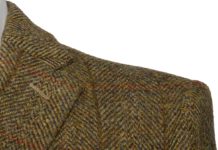As the name implies, spinal stenosis occurs when spaces in the spine become too narrow. This causes bones or other parts of the spine to compress your spinal cord and other nerves.
Symptoms may include neck and back pain, numbness, muscle weakness, and tingling in some people.
Spinal stenosis is most common in people over the age of 50. Some diseases, injuries, or narrower spines may cause it in young people.
Signs and Indications of Spinal Stenosis
There are different causes and symptoms of spinal stenosis depending on where the narrowing occurs along the spine. In the cervical and lumbar spine regions, stenosis usually occurs near the head and neck.
In the lower back, spinal stenosis can cause the following symptoms:
- Back pain in the lower back
- Standing or walking causes pain in your back and legs; leaning forward relieves it.
- You may feel tingling, numbness, or cramping in your feet or legs
- Leg and foot muscle weakness.
Neck stenosis symptoms include:
- Pain in the neck
- Numbness or tingling in your hands and arms
- Hands and arms are weak.
If you face the above signs, it is wise to visit Dr TS Gill, one of the best orthopaedic doctors in Chandigarh.
Spinal Stenosis: Causes and Risk Factors
Age-related changes in the spine primarily cause spinal stenosis. Increasing bone density and stiffness are ageing symptoms, resulting in less space between bones and ligaments. Spurs of bone may also develop on the spine and the nerves.
Spinal stenosis is also associated with the following risk factors:
- As a result of osteoarthritis, where cartilage is lost in the joints, excessive bone growth can occur, resulting in spinal space narrowing.
- Spine and nerve space may be affected by rheumatoid arthritis, which causes inflammation and swelling of soft joints.
- An excessive amount of bone growth can result in spinal stenosis due to Paget’s disease.
- Spinal stenosis can also be caused by injuries such as herniated disks. A car accident or other traumatic injury can misaligned vertebrae, reducing neural space.
Diagnosing Spinal Stenosis
Numbness and weakness are signs of spinal stenosis, and your doctor will examine you to determine if you suffer.
For confirmation, your doctor may order one of these tests:
- A back X-ray can reveal narrowing spinal canal spaces caused by bone changes.
- MRIs produce cross-sectional images of the spine that can show pressure on nerves in the spinal cord. Also, it can reveal disk and ligament damage.
- The CT scan can also be used if an MRI is not possible. An X-ray cross-section shows your spine from different angles.
Final words
The blog gives all details about spinal stenosis as described by the best orthopaedic doctor in Chandigarh. Visiting an expert is a wise idea if you face many issues.
- Why Everyone Is Talking About the Best Orthopedic Doctor in Delhi - December 21, 2024
- Discover Delhi’s Best Orthopedic Doctor: Transforming Lives One Joint at a Time - December 19, 2024
- Empowering Lives with Perth Disability Services: Your Trusted NDIS Service Provider in Perth - December 17, 2024






























